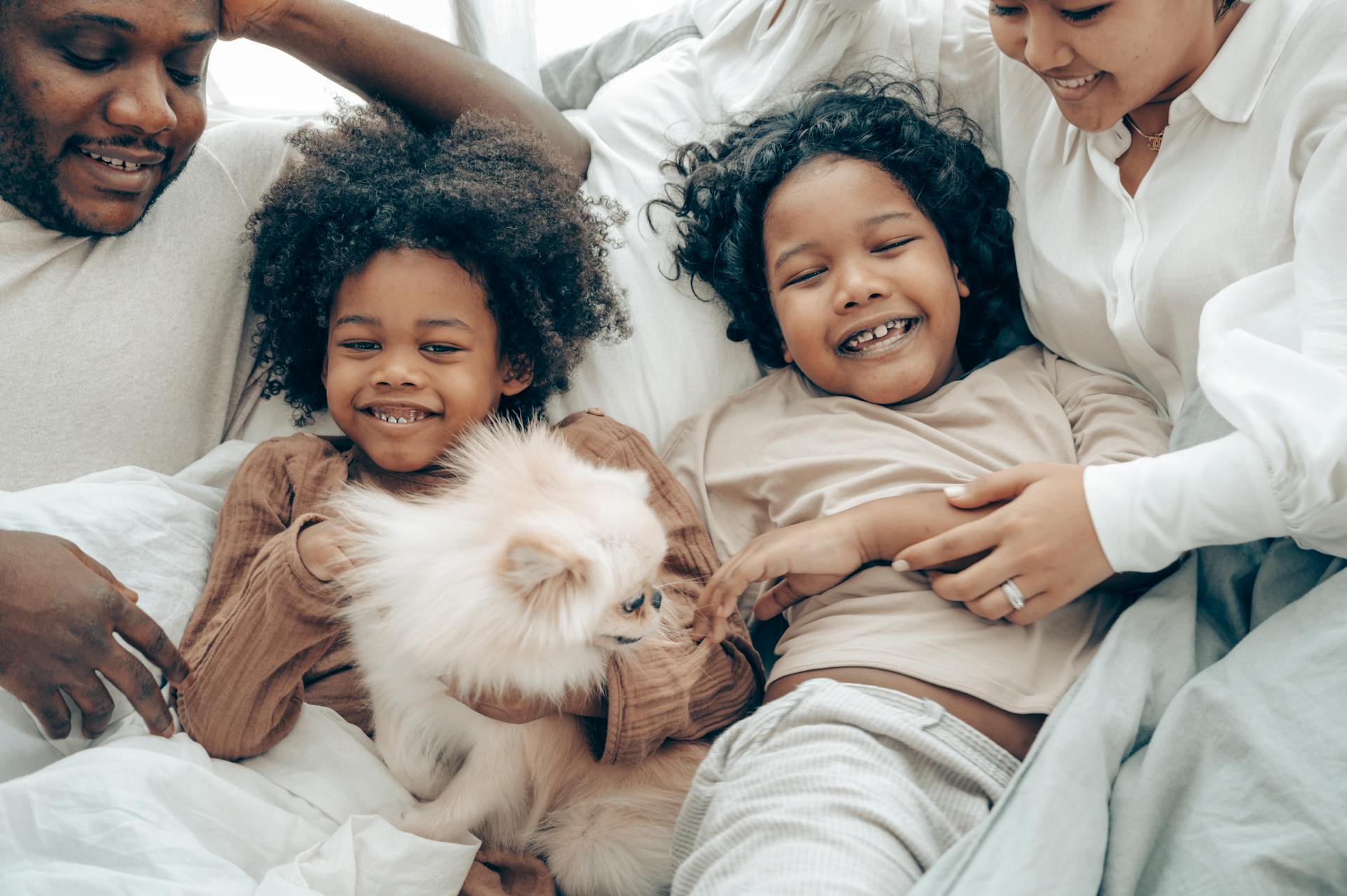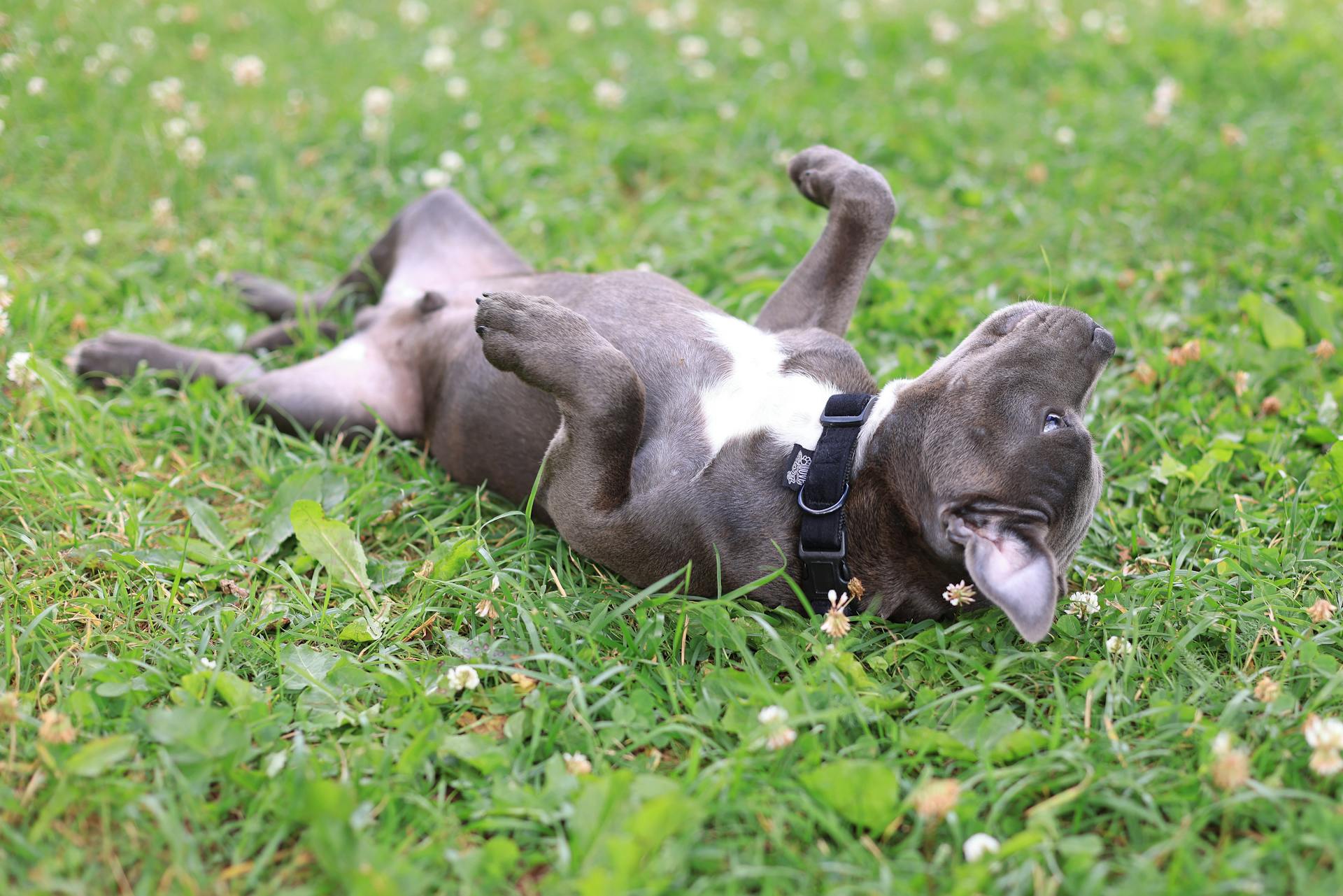
When a dog paces around your house, it can be frustrating and disruptive. It is important to understand the underlying cause of your pooch's behavior in order to effectively address it.
First, assess why your pup is pacing around the house. Dogs are pack animals and when they are left alone, they tend to get anxious or restless. An anxious pup might be trying to find you or another member of its pack, or they may be bored because they do not have enough stimulation or exercise. If your pup doesn't have enough exercise, start by increasing daily walks and play sessions. If he still seems anxious after that, look into interactive toys that require him to think in order to get a reward such as a treat or toy.
Second, create an appropriate environment for your dog by providing him with any exercise tools needed such as chew toys, puzzles and food bulkers that give rewards for chewing on them for long periods of time. Additionally, make sure their space is comfortable with toys, blankets and beds that make him feel at home in his den-like environment.
Finally provide comfort through physical contact such as petting or brushing your pup as well as verbal cues such as words of praise when he stops his pacing behavior or when you leave or come home from work. Be aware of the times where he tends to pace the most (morning when you leave for work? night time before bedtime?) and utilize those times as an opportunity to reinforce good behavior with treats and toys. Some experts also recommend calming music played at these moments which promotes relaxation in dogs with its low frequencies in combination with certain scents like lavender diffused into their space
Follow these simple steps & soon you’ll be able to see a change in your pup’s behavior - from pacing anxiously around the house at random times - to being more composed & enjoying his/her ‘den’ more peacefully!
You might enjoy: How Many Times Should I Take My Dog Out?
How can I keep my dog from constantly pacing?
Having a pet that constantly paces can be a source of worry, frustration and general confusion for many pet owners. It’s important to bear in mind that pacing is a normal behavior for many dogs and can be caused by many factors such as boredom, stress, physical discomfort, anxiety or even searching for attention.
The first and most important step is to identify the cause of the pacing and then take steps to address it. If your dog is pacing due to boredom or stress, providing them with regular exercise such as long daily walks or structured playtime with toys may help. If they are anxious or uncertain in their current environment you could create a “safe spot” where they can retreat to during periods of unsettlemenr. This could include a cozy bed, their favorite toy and some calming music.
Research has also highlighted the positive impact that gentle massage therapy can have on reducing stress and calming anxious dogs as it releases natural endorphins in the body which induce relaxation. Massage can be done regularly at home or you could visit a professional for assistance if you feel your pet would benefit from deeper manipulation techniques. Learning how to reward good behaviors in conjunction with consistent training will encourage behaviors more appropriate than pacing. Being consistent with these changes make take some time but you should start to notice the positive results over time.
Overall, although pacing is a perfectly normal behavior for many pets, it’s worth taking into account behavioral training methods that combine reward-based conditioning and physical activities to reduce boredom and stress so your dog’s pace doesn't get out of control.
Intriguing read: What Is the Time on the White Rabbit's Pocket Watch?
What can I do to stop my dog from wandering around the house?
If your four-legged friend seems to have trouble staying put in one place, it can be frustrating - not to mention dangerous if they tend to wander outside your home. Fortunately, there are some simple things you can do to keep your pup in one spot and prevent them from running off.
First and foremost, make sure that your dog is getting the exercise they need so that they don't become bored and restless throughout the day. Take them for a walk or play with them outdoors at least once a day to keep their energy levels in check. If you can’t spare the time on a daily basis, consider getting them some interactive toys like Kongs or puzzle games that will keep them mentally and physically stimulated when you’re not around.
Another helpful tactic is to use positive reinforcement when it comes to training your pet. Reward them with treats when they stay in one place rather than roaming around the house and eventually, this cognitive training will help limit their movement. Additionally, if there are specific rooms you don't want them entering (like the kitchen or living room) create designated “off-limit” zones by closing doors or using gates as boundaries they're not allowed to cross; physical barriers often work wonders when trying to enforce rules with animals.
Finally, be consistent with all of these methods - create routines and stick with them each day; whether it's going for a walk at 4PM or feeding dinner at 6PM - having consistency will establish trust between human and pup alike. With an abundance of patience and understanding, soon enough your fur baby should obey any boundaries – without fail – without even having to be asked!
You might like: Dogs Don
What are some ways to prevent my dog from pacing around the house?
When faced with a dog that’s pacing around the house, it’s important for pet owners to take the necessary steps to help their pup feel relax and more secure. Pacing can be an indication of stress, anxiety, or boredom and can lead to more serious behavior problems down the road. Fortunately, it’s relatively easy to create a calming environment for your furry friend that will minimize their need to pace.
The first step is to provide plenty of exercise and mental stimulation. Exercise reduces stress in dogs and helps keep them healthy by providing them with an outlet for their energy. Engaging activities like walks or interactive toys that require problem-solving skills can also help reduce pacing. Mental stimulation will keep your pup thinking and their mind occupied instead of dwelling on worrying thoughts that could cause them to pace around the house or act out. Additionally, make sure they are getting enough sleep. Dogs like humans are healthiest if they get adequate periods of rest throughout the day and during sleeping hours at night.
Finally, create a safe, cozy space for your pup in the home with low lighting and gentle music or sounds to provide physical comfort and emotional security for your dog. Ensure that there are plenty of comfortable napping spots where your pup can escape from family members when feeling overwhelmed or scared by adding dog beds and blankets scattered around your home as well as special toys only found in this sacred calming space away from other distractions like kids playing or loud activities happening inside the house such as vacuuming or talking on the phone. Additional techniques like wrapping the dog in a snug blanket or providing calming essential oils such as lavender may further help reduce anxious behaviors associated with pacing around a new space.
By using these methods pet owners create a safe space where their pup feel comfortable enough not to want to wander around aimlessly meandering through rooms looking for something unknown while also receiving adequate forms of exercise and mental stimulation through engaging activities which will benefit both physical fitness as well as emotional wellness of their beloved pet companion who plays an important role in family lives now more than ever before!
Take a look at this: How Much Space Do Horses Need?
How can I make my dog settle down while inside?
Having a pet dog is lots of fun, but when they are running and jumping around without settling down it can cause distress and disruption. It’s important to get your dogs settled down while they’re in the house. Here are a few tips that may help you out:
Start by ensuring that your dog has had proper exercise. A tired dog will naturally be more likely to settle in than an energetic one, so taking your pup on regular runs or walks will be beneficial. Monitor how much activity they get periodically and adjust if necessary.
This also includes mental exercise! If your pooch is feeling stagnant, occupying them with puzzles or providing them with chews can help channel their energy in a positive way.
Finally, create clear boundaries for your pet that identifies where it is more acceptable for them to settle down in the house. This can include having their bed positioned somewhere appropriate, but furnishing the space with blankets and toys that are safe for chewing can make all the difference too. This will help them to differentiate from areas designated as play time spots too.
In conclusion, getting your dog settled down while inside need not be so hard! Whether you have an energetic breed or an easily bored canine, providing both mental and physical stimulation along with implementing clear bay boundaries should help considerably.
Consider reading: Clear Eyes Solution for Dogs
What activities can I engage my dog in to distract him from pacing?
When you’ve noticed that your pup is pacing, it can be a difficult challenge to help them keep calm and redirected into activities that can keep them out of trouble. Thankfully, there are a variety of activities that pet owners can engage their pup in to help them relax, stay focused and maintain an overall better sense of wellbeing.
First and foremost, engaging your pup in regular exercise is the best way to ensure their physical & mental health. Whether you take your pup for daily walks or plan a weekend hike to explore the great outdoors together, regular exercise helps regulate blood pressure, maintain healthy muscle mass and keep up with mental stimulation. Additionally, exercise also offers opportunities to practice commands like “sit” & “stay” while allowing your pup to stretch their legs & clear out any lingering energy!
Another great way to engage your pup is through interactive puzzle toys - this method encourages problem-solving abilities and provides an opportunity to learn new tricks or simply practice existing ones. Puzzle toys come in a variety of styles - from classic stuffed chew-toys with hidden treats inside the pocket seams to more sophisticated treat-dispensing puzzle games - these types of toys offer hours of entertainment for curious dogs and help redirect boredom into productive activities for both owner and pet!
Finally, don’t forget about basic obedience training! This does not require purchasing any extra accessories or items as you already have all that you need – yourself & your pup! From asking them to respond/react favorably towards verbal commands; teaching simple behaviors like “stop” or “stay”; or practicing cool tricks - obedience training is a great activity for both pups and owners alike! Not only it keeps inquisitive minds busy learning something new, but it will also build upon the bond between owner & pet as both work towards common goals together.
Ultimately, when distracting pacing pups there are many ways pet owners can engage their pup in productive activities - from getting them out on walks; introducing interactive puzzle toys; or practicing obedience training – these activities all provide unique opportunities for growth & learning while helping pups stay focused when they become overly energetic.
Intriguing read: How to Stop Dog Aggression towards Cats on Walks
Is there a way I can redirect my dog's energy away from pacing?
Redirecting the energy of a pacing dog can be an effective way to addressing the root cause of their behavior. With the right strategies and methods, you can redirect their energy in a positive way and ensure your pup feels calm and relaxed in your home again.
The first step to take when trying to redirect a dog's energy from pacing involves identifying the root of the problem. Is there something stressing them out or a specific environmental factor? If you can identify the issue, it makes it much easier for you to treat it effectively. A vet is able to offer advice on how to diagnose or treat stress-related issues with your pup if necessary.
In some cases, dogs may begin pacing due to fear or lack of stimulation - so one of the best ways to redirect this energy is by providing them with plenty of mental and physical stimulation throughout the day. You could provide your pup with chew toys, long walks, stimulating forms of play like hide and seek, or allow them time outside in an enclosed space where they can explore safely. Interactive toys stuffed with treats or snacks are also great methods for providing stimulation and mental challenge for your pup - this helps keep their mind engaged rather than stuck in an anxious pattern like pacing.
Aside from exercise and stimulation, you should also focus on creating a space for your pet which is comfortable and filled with positive reinforcement when they're not actively being stimulated. Praise them whenever possible, as well as give them treats regularly as reward based training will help snub out negative behavior like pacing quickly - making sure that you're consistently communicating the desired behavior through verbal cues will allow for easier redirection of their focus when needed too!
Consider reading: Static Stimulation Dog Collar
Sources
- https://www.dogster.com/dog-health-care/dog-pacing-why-it-happens-and-how-to-help-your-pacing-dog
- https://www.akc.org/expert-advice/training/play-brain-games-with-your-dog/
- https://vcahospitals.com/know-your-pet/dog-behavior-and-training-teaching-calm-settle-and-relaxation-training
- https://thevets.com/blog/dog-pacing-reasons-and-how-to-help/
- https://www.vetstreet.com/our-pet-experts/why-does-my-dog-roam
- https://discover.hubpages.com/animals/dog-wandering
- https://dogacademy.org/blog/how-to-train-an-aggressive-dog/
- https://www.newsweek.com/working-home-dog-games-entertainment-activities-1700950
Featured Images: pexels.com


